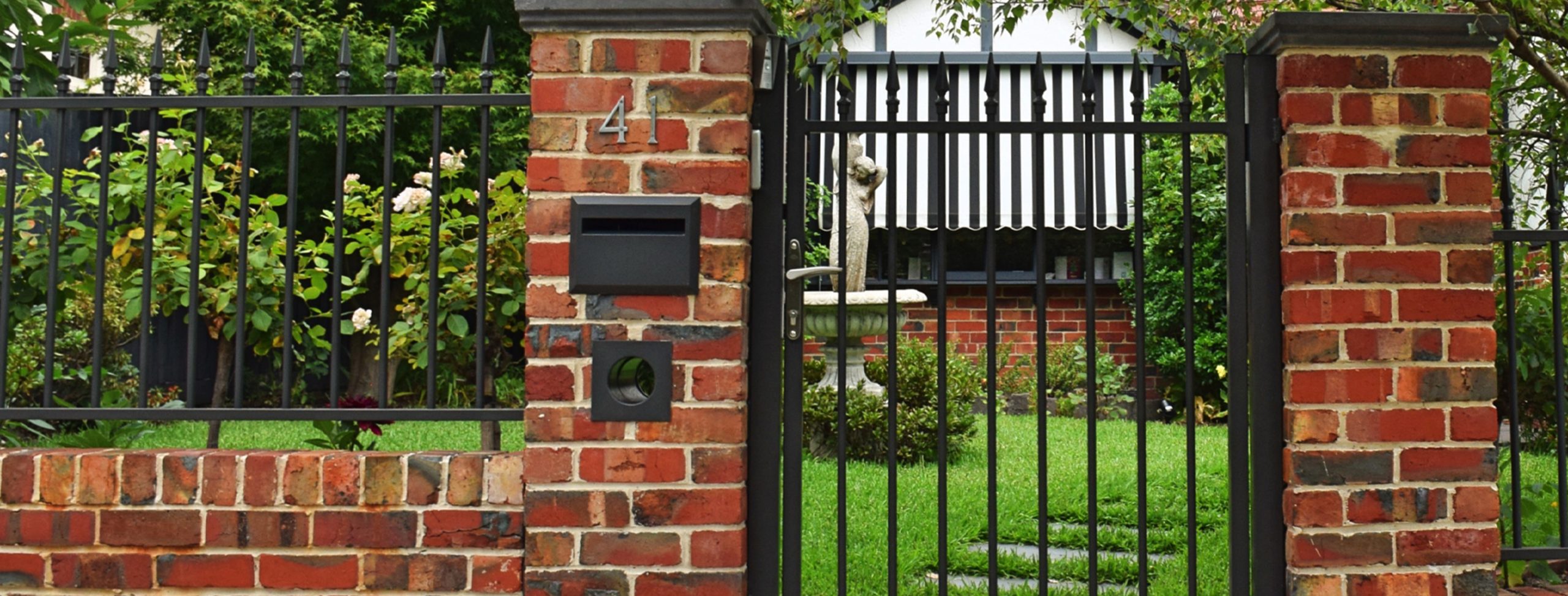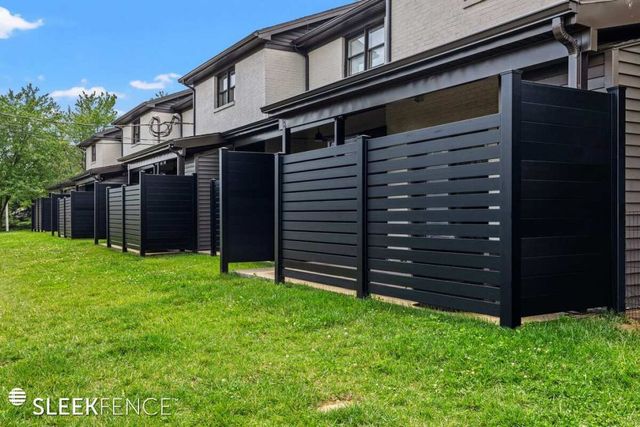All Categories
Featured
When it comes to preserving a wooden fencing, home owners often face the decision of whether to paint or stain. Both alternatives have their advantages and disadvantages, and the choice ultimately depends on your aesthetic preferences, the kind of wood, and how much maintenance you're willing to commit to. Here's a thorough contrast to help you make an informed decision.
The Basics of Paint and Staining
Paint entails covering the timber with a nontransparent layer of shade. It offers total insurance coverage, concealing the wood grain while supplying excellent defense against ecological components.
Discoloring permeates the wood, enhancing its all-natural charm while including a protective layer. Depending upon the kind, spots can vary from clear to strong, allowing differing degrees of wood grain exposure.
Benefits And Drawbacks of Painting
Pros:
Vast Array of Color styles: Paint deals endless color choices, permitting you to match your fence to your home's outside or individual design.
Longer Long lasting: Premium outside paint can last as much as 5-7 years, needing less regular reapplication.
Superior Protection: Repaint forms a thick, solid obstacle against moisture, UV rays, and parasites.
Disadvantages:
Breaking and peeling: In time, paint can fracture or peel off, particularly in locations with extreme weather.
Hides Natural Timber Appeal: If you like the natural grain of wood, paint may not be the best choice.
Greater Upkeep: Repainting requires removing the old paint, which can be labor-intensive.
![]()
Pros and Disadvantages of Discoloration
Pros:
All-natural Look: Discolorations preserve and improve the natural beauty of the wood, making it perfect for top quality lumber like cedar or redwood.
Easier to Reapply: Unlike paint, stains do not peel off or fracture. Reapplying stain usually calls for less surface area preparation.
Flexible Complete Options: Spots been available in transparent, semi-transparent, and strong selections, offering different degrees of protection.
Disadvantages:
![]()
Shorter Life-span: Stains, especially clear and semi-transparent ones, may require reapplication every 2-3 years.
Minimal Color Choices: While discolorations supply natural tones, they do not have the broad shade palette readily available with paint.
Much Less Safety: Stains penetrate the wood yet don't provide as thick a barrier as paint, making them somewhat much less safety versus severe climate.
Variables to Think About
Aesthetic Preferences: If you want lively colors and full coverage, paint is the way to go. For a rustic and all-natural appearance, go with tarnish.
Wood Type: Premium woods with lovely grains take advantage of staining, while lower-grade woods can be repainted for a refined look.
![]()
Climate: In damp or damp environments, paint's thicker obstacle might use far better defense. In moderate or completely dry environments, discolorations can suffice.
Upkeep Commitment: Paint involves much less regular reapplication however even more initiative during touch-ups. Discoloration requires normal upkeep but is less complicated to manage.
Final Thoughts
Both painting and staining can efficiently protect and beautify your wooden fence. The most effective choice depends upon your top priorities, whether they favor visual appeals, sturdiness, or simplicity of upkeep. By comprehending the advantages and disadvantages of each, you can select the finish that lines up with your needs and guarantees your fencing stays a standout attribute of your building for many years to find.
The Basics of Paint and Staining
Paint entails covering the timber with a nontransparent layer of shade. It offers total insurance coverage, concealing the wood grain while supplying excellent defense against ecological components.
Discoloring permeates the wood, enhancing its all-natural charm while including a protective layer. Depending upon the kind, spots can vary from clear to strong, allowing differing degrees of wood grain exposure.
Benefits And Drawbacks of Painting
Pros:
Vast Array of Color styles: Paint deals endless color choices, permitting you to match your fence to your home's outside or individual design.
Longer Long lasting: Premium outside paint can last as much as 5-7 years, needing less regular reapplication.
Superior Protection: Repaint forms a thick, solid obstacle against moisture, UV rays, and parasites.
Disadvantages:
Breaking and peeling: In time, paint can fracture or peel off, particularly in locations with extreme weather.
Hides Natural Timber Appeal: If you like the natural grain of wood, paint may not be the best choice.
Greater Upkeep: Repainting requires removing the old paint, which can be labor-intensive.

Pros and Disadvantages of Discoloration
Pros:
All-natural Look: Discolorations preserve and improve the natural beauty of the wood, making it perfect for top quality lumber like cedar or redwood.
Easier to Reapply: Unlike paint, stains do not peel off or fracture. Reapplying stain usually calls for less surface area preparation.
Flexible Complete Options: Spots been available in transparent, semi-transparent, and strong selections, offering different degrees of protection.
Disadvantages:

Shorter Life-span: Stains, especially clear and semi-transparent ones, may require reapplication every 2-3 years.
Minimal Color Choices: While discolorations supply natural tones, they do not have the broad shade palette readily available with paint.
Much Less Safety: Stains penetrate the wood yet don't provide as thick a barrier as paint, making them somewhat much less safety versus severe climate.
Variables to Think About
Aesthetic Preferences: If you want lively colors and full coverage, paint is the way to go. For a rustic and all-natural appearance, go with tarnish.
Wood Type: Premium woods with lovely grains take advantage of staining, while lower-grade woods can be repainted for a refined look.

Climate: In damp or damp environments, paint's thicker obstacle might use far better defense. In moderate or completely dry environments, discolorations can suffice.
Upkeep Commitment: Paint involves much less regular reapplication however even more initiative during touch-ups. Discoloration requires normal upkeep but is less complicated to manage.
Final Thoughts
Both painting and staining can efficiently protect and beautify your wooden fence. The most effective choice depends upon your top priorities, whether they favor visual appeals, sturdiness, or simplicity of upkeep. By comprehending the advantages and disadvantages of each, you can select the finish that lines up with your needs and guarantees your fencing stays a standout attribute of your building for many years to find.
Latest Posts
Why Regular Car Maintenance at Montclare Auto Repair Reduces Costs
Published May 22, 25
1 min read
Experience WyHy Federal Credit Union – Top Benefits for Your Financial Success
Published May 22, 25
1 min read
Discover Your Financial Partner at WyHy – Key Advantages for Your Financial Success
Published May 22, 25
1 min read
More
Latest Posts
Why Regular Car Maintenance at Montclare Auto Repair Reduces Costs
Published May 22, 25
1 min read
Experience WyHy Federal Credit Union – Top Benefits for Your Financial Success
Published May 22, 25
1 min read
Discover Your Financial Partner at WyHy – Key Advantages for Your Financial Success
Published May 22, 25
1 min read